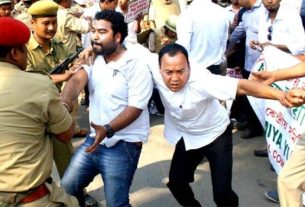Iran is facing a severe energy crisis as freezing weather grips the nation, leading to fuel shortages that have forced the suspension of operations at several power plants. The unprecedented cold snap has significantly increased household gas consumption, resulting in electricity rationing, school closures, and power cuts across the country, including in the capital, Tehran.
Despite being one of the world’s largest holders of natural gas reserves, Iran’s energy infrastructure has struggled to meet the surging demand. The crisis has escalated in recent weeks, prompting the government to take emergency measures. President Masoud Pezeshkian, acknowledging the situation’s gravity, apologized to the nation on Monday and assured citizens that efforts are underway to resolve the issue by next year.
The western province of Lorestan is among the hardest-hit regions, where a gas-powered plant was partially shut down on Monday due to soaring gas consumption by households, according to the state-run IRNA news agency. Similarly, Golestan province in the north closed several plants over the weekend to cope with the energy deficit. Isfahan and West Azerbaijan provinces have also ordered the closure of schools and government buildings to conserve energy as sub-zero temperatures persist.
Nationwide, schools and government offices in over 20 provinces have shut down, reflecting the extent of the cold wave’s impact. Tehran, the country’s capital, is no exception, with residents enduring power cuts as authorities scramble to balance supply and demand. Local media reports indicate that power-saving measures implemented in recent days have saved two million cubic meters of gas and 100 megawatts of electricity within 24 hours.
The crisis has highlighted vulnerabilities in Iran’s energy infrastructure, which is already under pressure due to aging facilities and international sanctions restricting access to modern technology and investments. Experts warn that without significant reforms and upgrades, the country could face recurring challenges in extreme weather conditions.
The government’s immediate focus remains on mitigating the crisis, urging citizens to reduce fuel consumption and implement energy-saving practices. However, critics argue that a long-term strategy is essential to modernize the energy sector and prevent similar crises in the future.
As the freezing temperatures continue, Iran’s struggle to balance its vast natural gas reserves with its domestic energy needs underscores the complexity of its energy policies and infrastructure limitations.





